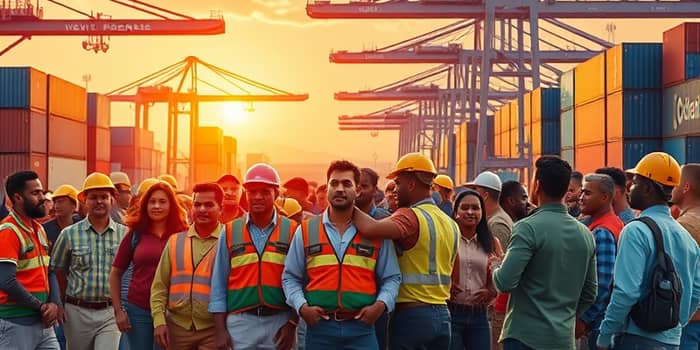
In an era defined by change, labor strikes have surged with unprecedented intensity. From manufacturing plants to retail outlets, employees are asserting their voices and reshaping the economic landscape. As these disputes become more frequent, markets must adapt or risk being left behind.
Over the past five years, we have witnessed a dramatic upswing in labor actions. In 2024 alone, there were 33 major work stoppages involving more than 1,000 workers each—the highest level since the turn of the century. This surge reflects a broader social shift: unprecedented levels of public support for unions and collective action.
Workers in sectors once considered immune to unionization—such as food services and retail—are banding together. High-profile victories in transportation and manufacturing have inspired employees across industries to explore collective bargaining and fair transitions. This renewed labor vigor is underpinned by a belief that collaboration between employees and management can lead to fairer wages, safer workplaces, and more sustainable corporate practices.
Major strikes deliver shockwaves through local and national economies. Take the Boeing strike of late 2024: 20,872 jobs lost, $5.7 billion in GDP output vanished, and $2.5 billion in income evaporated from communities. The aftermath persisted long after workers returned to the assembly lines.
Similarly, the East and Gulf Coast dockworkers’ strike in October disrupted roughly $4.3 billion in trade each week—about 0.1 percent of GDP. With $1.3 billion in exports and $3 billion in imports stalled daily, ports felt the strain for months. These events illustrate how persistent economic ripple effects can reverberate through supply chains, consumer prices, and investor confidence.
Not all sectors feel the pain equally. Transportation, logistics, and manufacturing—reliant on just-in-time delivery—are particularly vulnerable. Disruptions in rail networks, airline services, and port operations can send shockwaves through retail, agriculture, and energy markets. Investors have taken note, treating labor disputes as systemic threats to supply chain equities and adjusting portfolios accordingly.
How can companies, investors, and communities navigate this evolving landscape? The answer lies in preparation, adaptability, and empathy. Firms that embrace proactive labor-relations monitoring strategies and strategic diversification of suppliers stand a better chance of weathering work stoppages.
Investors, meanwhile, are shifting capital toward companies with robust labor practices and clear contingency plans. By prioritizing businesses that value human capital and maintain transparent negotiations, they reduce portfolio volatility and align with long-term governance goals.
Communities can also play a vital role. Local governments and trade associations should facilitate workshops on negotiation skills, financial planning for wage interruptions, and alternative employment pathways. These efforts strengthen social resilience and foster mutual respect between employers and employees.
Ultimately, the market’s evolving reaction to labor strikes highlights a simple truth: economic prosperity and worker well-being are intertwined. Embracing this reality through fair labor practices and strategic planning paves the way for more harmonious growth.
As we move forward, let us remember that every strike represents a chance to build stronger partnerships. By listening to workers, adapting supply chains, and investing in community resilience, businesses and investors can transform conflict into opportunity—and help shape a more inclusive, sustainable economy.
References













